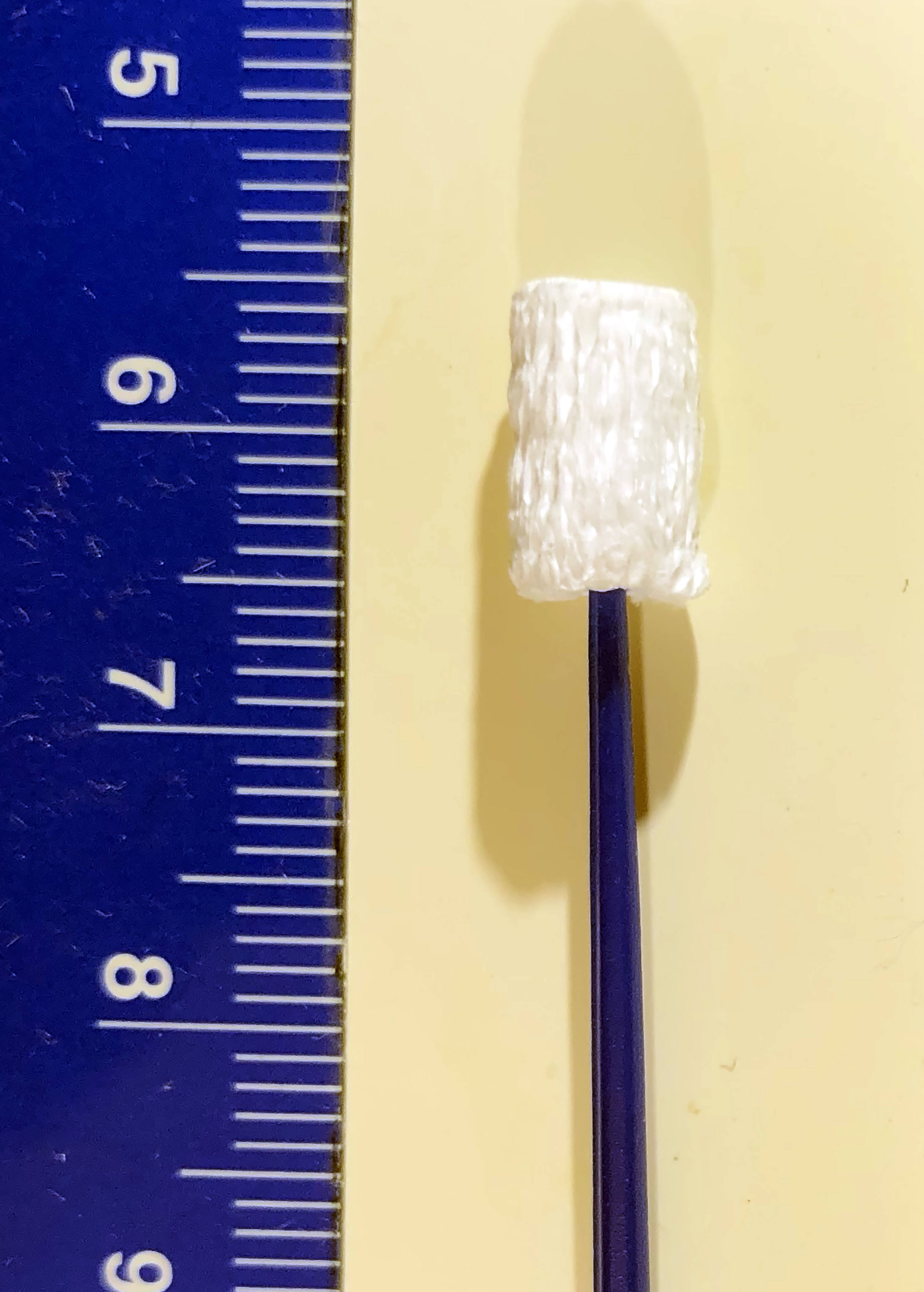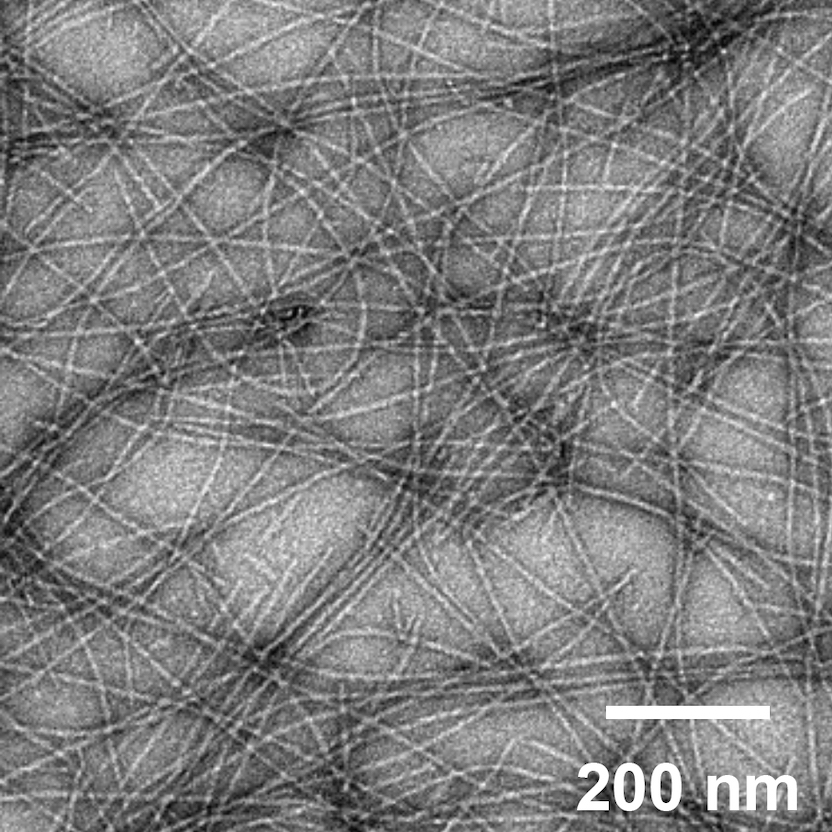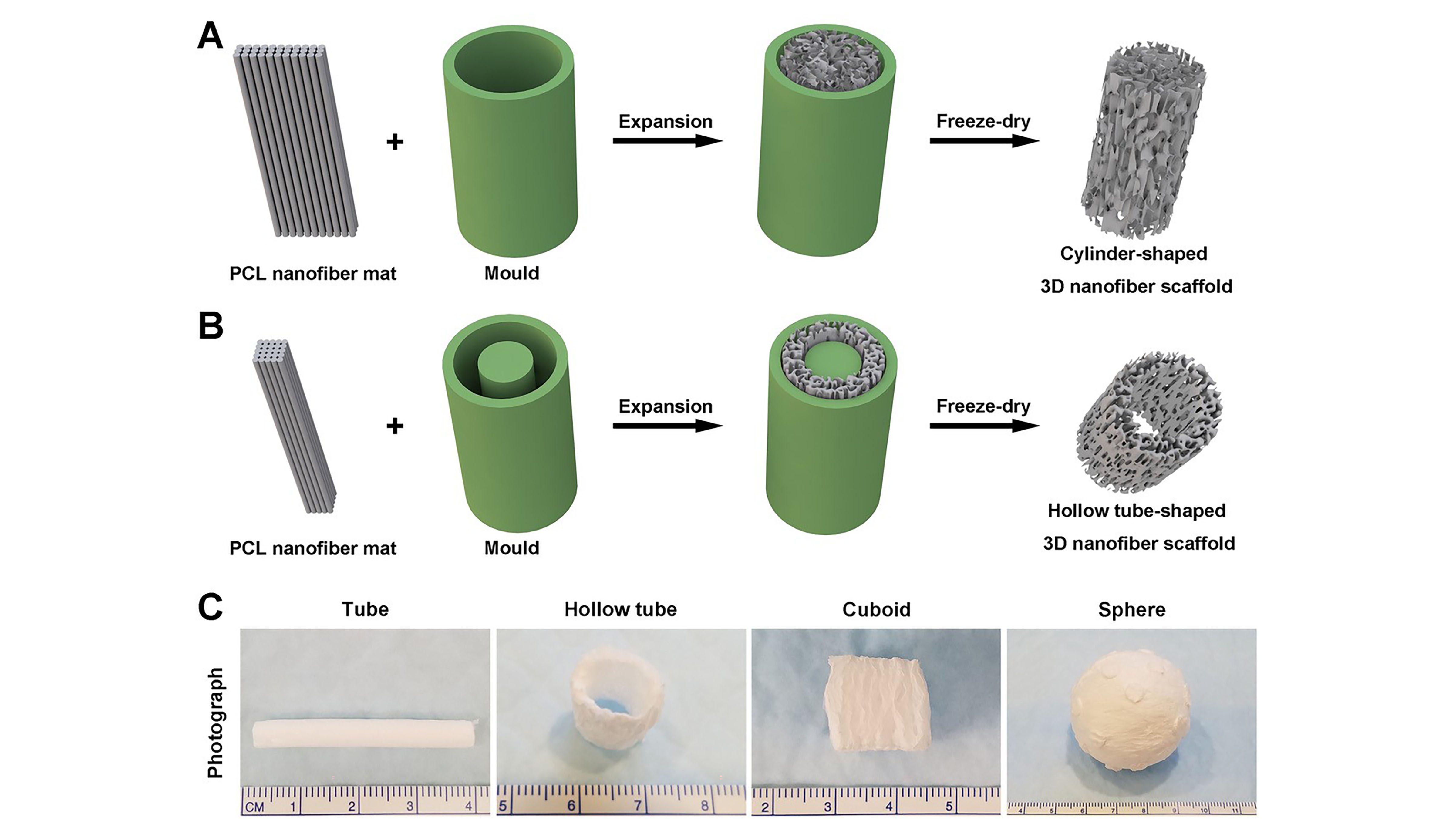In Biointerphases, researchers develop a fabrication method to increase the efficacy and longevity of membrane separation technology. The team created a nanofibrous membrane with electrospinning, in which a liquid polymer droplet is electrified and stretched to make fibers, and increased the roughness of the membrane surface by loading it with silver nanoparticles. In water, this rough surface promotes a stable layer of water, which acts as a barrier to prevent oil droplets from entering the membrane. The technology is greater than 99% effective at separating a petroleum ether-in-water emulsion.
Tag: Nanofiber
AI-driven dynamic face mask adapts to exercise, pollution levels
Researchers reporting in ACS Nano have developed a dynamic respirator that modulates its pore size in response to changing conditions, such as exercise or air pollution levels, allowing the wearer to breathe easier when the highest levels of filtration are not required.
Engineers build nanostructures that fight inflammation
Nanofiber-based treatments stimulate the body to mount its own biological attack on immune disorders.

Ultra-absorptive nanofiber swabs could improve SARS-CoV-2 test sensitivity
Researchers reporting in ACS’ Nano Letters have developed ultra-absorptive nanofiber swabs that could reduce the number of false-negative SARS-CoV-2 tests by improving sample collection and test sensitivity.
Technion’s Nanofiber PPE Sticker Now In Mass Production
The COVID-busting ‘Maya’ sticker developed by Technion researchers has gone into mass production. Comprised of a nanofiber sheet, the unique sticker can be easily adhered to a protective mask, significantly improving its effectiveness against the novel coronavirus.

New intranasal vaccine platform provides potential for more effective vaccines with fewer side effects
A new study at the University of Chicago and Duke University finds that a new type of intranasal vaccine induces a strong immune response in lungs, with possible implications for COVID-19. The system uses nanofibers tagged with antigens to prime the immune system against a potential invasion.

Nanofiber Membranes Transformed Into 3D Scaffolds
Researchers combined gas foaming and 3D molding technologies to quickly transform electrospun membranes into complex 3D shapes for biomedical applications. The new approach demonstrates significant improvements in speed and quality compared with other methods, and is the first successful demonstration of formation of 3D neural tissue constructs with an ordered structure through differentiation of human neural progenitor/stem cells on these transformed 3D nanofiber scaffolds. They discuss their work in this week’s Applied Physics Reviews.

Creating Miracles with Polymeric Fibers
Mohan Edirisinghe leads a team at University College London studying the fabrication of polymeric nanofibers and microfibers — very thin fibers made up of polymers. The fibers can be woven into textilelike structures but depending on the use, different fiber thicknesses may be necessary. To study the effects of various parameters on fiber fabrication, the researchers compared the characteristics of fibers created in different ways. The group describes the work in Applied Physics Reviews.